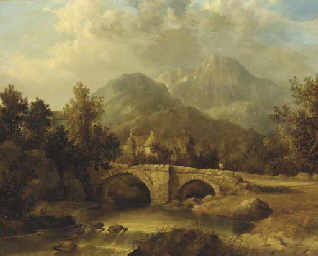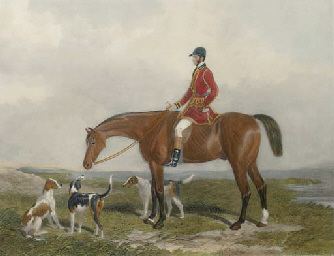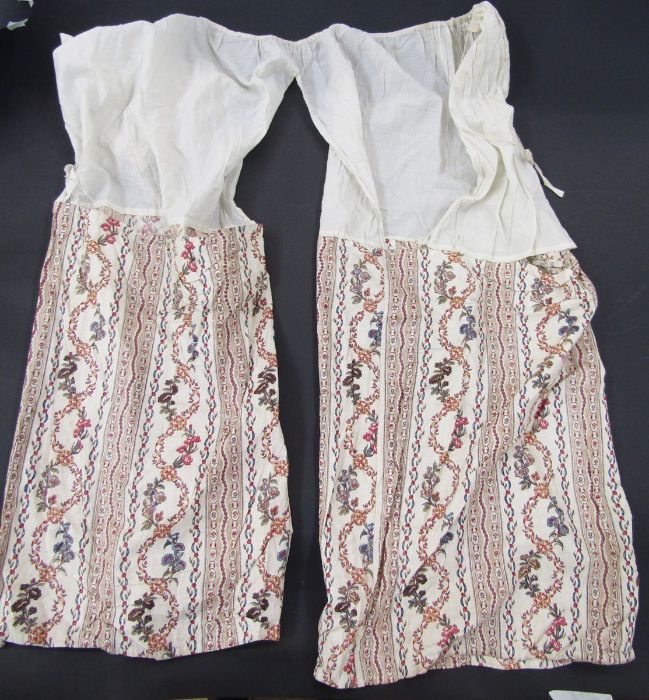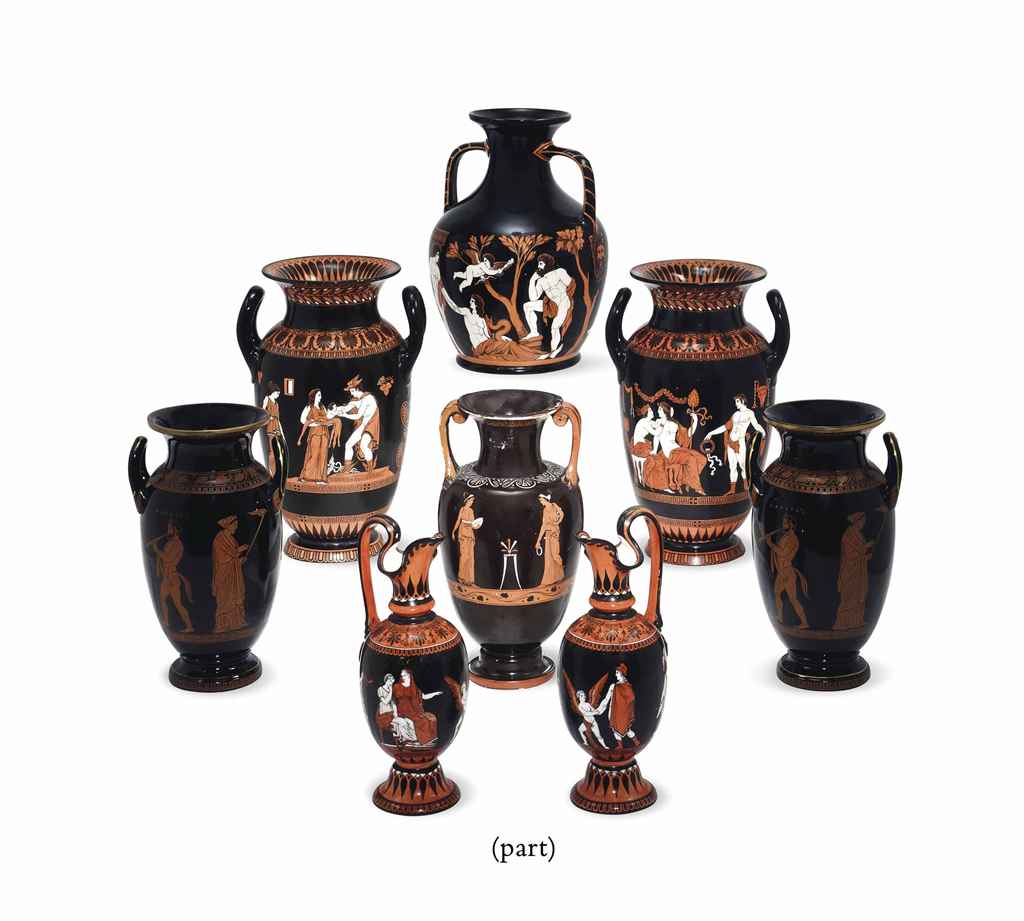(The Collector: Objects to Clocks, 30th March 2021) A MID 19TH CENTURY FRENCH GILT BRONZE AND GLASS MYSTERY CLOCK ATTRIBUTED TO ROBERT HOUDIN A MID 19TH CENTURY FRENCH GILT BRONZE AND GLASS MYSTERY CLOCK ATTRIBUTED TO JEAN EUGENE ROBERT-HOUDIN, the circular gilt bezel enclosing the replaced transparent glass dial and hand, the dial with Roman numerals, the dial bearing the signature ‘ROBERT HOUDIN’, raised on a twin acanthus support enclosing the gear that operates the hand (which appears to have no apparent connection to the clock movement), over the outswept plinth decorated cast with a caryatid figure issuing acanthus leaves, over a further giltwood plinth base with shell motif, the twin train movement with outside countwheel and silk suspension striking on a bell, signed 'ROMOLI & HAUSBOURG A PARIS', (lacking pendulum) 43cm high including giltwood plinth, The movement is winding and striking but not fully tested or guaranteed. In 1831 Robert Houdin began to develop the first mystery clocks, and between 1831 and 1844 he produced five distinct types all functioning in slightly different ways and for different effect. The present clock belongs to the second series, which have transparent dials and a single hand that appears to move of its own accord, and although in this example only the replaced dial is bearing the Houdin signature, the style of the clock and the similarity to numerous known, signed examples indicate that it was also produced by Houdin. When one of Houdin's mystery clocks was first exhibited in London in 1838, it is said spectators were amazed and could not work out how the hand moved, many speculating that the clock was driven with magnetism. In 1839 Robert Houdin exhibited some of his mystery clocks at the Exhibition of French Industry, and won a bronze medal. By the 1840’s he was also producing automaton, one of which won him the silver medal at a National Industrial Exhibition in 1844. This resulted in specific commissions for such pieces from conjurers and other showmen such as Phineas Barnum, who toured the world with Houdin’s machine for twenty years. This success helped to introduce him to the world of magic and conjuring, and by 1845 he had fulfilled a childhood dream and opened his own theatre show at the Palais Royal ‘Les Soirees Fantastiques Robert – Houdin’. His show was unique in that it incorporated traditional conjuring tricks with his own automatons to create magical effect. It proved to be immensely popular, so much so that by the 1850’s he was performing private shows for Queen Victoria at Buckingham Palace. His clocks, automatons and other inventions became world famous, and he is now widely considered to be not only the inventor of the first mystery clocks but also perhaps more importantly, the father of modern magic and conjuring. It has been said that every magician of the 20th century is ‘haunted’ by Robert Houdin, his techniques and showmanship casting a shadow over all future conjurers. Certainly the famous Harry Houdini was so in awe of Houdin that he changed his name from Ehrich Weiss to Harry Houdini in homage to the great master, for he erroneously believed that adding an ‘I’ to the end of a name meant ‘like’ in French. Related Literature: Derek Roberts ‘Mystery, Novelty & Fantasy Clocks’, pp 225-226.
(The Collector: Objects to Clocks, 30th March 2021) A MID 19TH CENTURY FRENCH GILT BRONZE AND GLASS MYSTERY CLOCK ATTRIBUTED TO ROBERT HOUDIN A MID 19TH CENTURY FRENCH GILT BRONZE AND GLASS MYSTERY CLOCK ATTRIBUTED TO JEAN EUGENE ROBERT-HOUDIN, the circular gilt bezel enclosing the replaced transparent glass dial and hand, the dial with Roman numerals, the dial bearing the signature ‘ROBERT HOUDIN’, raised on a twin acanthus support enclosing the gear that operates the hand (which appears to have no apparent connection to the clock movement), over the outswept plinth decorated cast with a caryatid figure issuing acanthus leaves, over a further giltwood plinth base with shell motif, the twin train movement with outside countwheel and silk suspension striking on a bell, signed 'ROMOLI & HAUSBOURG A PARIS', (lacking pendulum) 43cm high including giltwood plinth, The movement is winding and striking but not fully tested or guaranteed. In 1831 Robert Houdin began to develop the first mystery clocks, and between 1831 and 1844 he produced five distinct types all functioning in slightly different ways and for different effect. The present clock belongs to the second series, which have transparent dials and a single hand that appears to move of its own accord, and although in this example only the replaced dial is bearing the Houdin signature, the style of the clock and the similarity to numerous known, signed examples indicate that it was also produced by Houdin. When one of Houdin's mystery clocks was first exhibited in London in 1838, it is said spectators were amazed and could not work out how the hand moved, many speculating that the clock was driven with magnetism. In 1839 Robert Houdin exhibited some of his mystery clocks at the Exhibition of French Industry, and won a bronze medal. By the 1840’s he was also producing automaton, one of which won him the silver medal at a National Industrial Exhibition in 1844. This resulted in specific commissions for such pieces from conjurers and other showmen such as Phineas Barnum, who toured the world with Houdin’s machine for twenty years. This success helped to introduce him to the world of magic and conjuring, and by 1845 he had fulfilled a childhood dream and opened his own theatre show at the Palais Royal ‘Les Soirees Fantastiques Robert – Houdin’. His show was unique in that it incorporated traditional conjuring tricks with his own automatons to create magical effect. It proved to be immensely popular, so much so that by the 1850’s he was performing private shows for Queen Victoria at Buckingham Palace. His clocks, automatons and other inventions became world famous, and he is now widely considered to be not only the inventor of the first mystery clocks but also perhaps more importantly, the father of modern magic and conjuring. It has been said that every magician of the 20th century is ‘haunted’ by Robert Houdin, his techniques and showmanship casting a shadow over all future conjurers. Certainly the famous Harry Houdini was so in awe of Houdin that he changed his name from Ehrich Weiss to Harry Houdini in homage to the great master, for he erroneously believed that adding an ‘I’ to the end of a name meant ‘like’ in French. Related Literature: Derek Roberts ‘Mystery, Novelty & Fantasy Clocks’, pp 225-226.















Try LotSearch and its premium features for 7 days - without any costs!
Be notified automatically about new items in upcoming auctions.
Create an alert